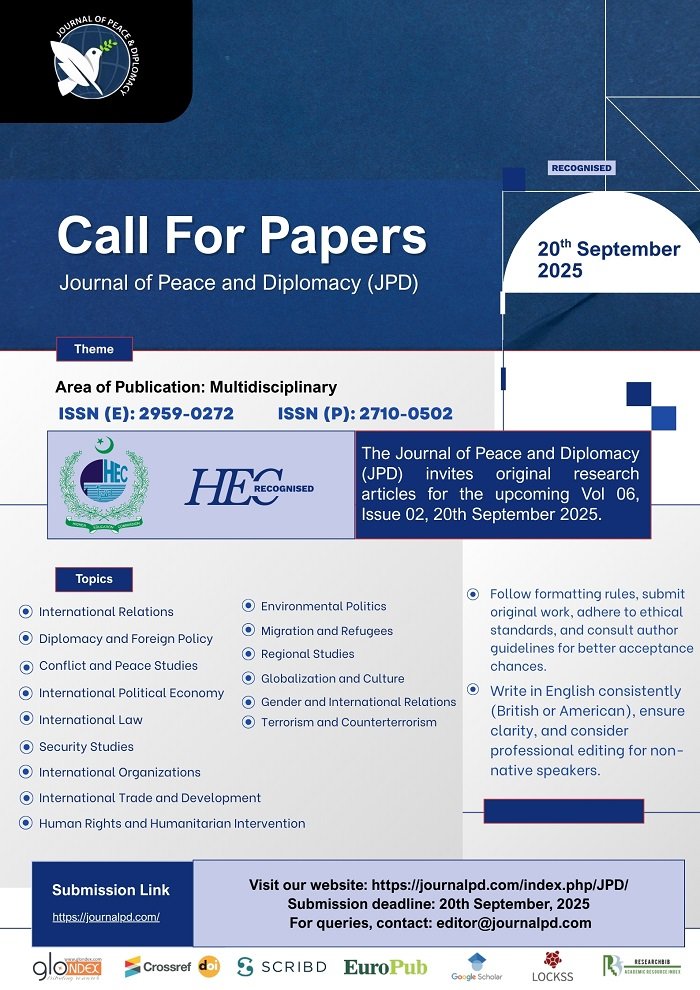The Essequibo Conundrum: Conflict Analysis of Venezuela-Guyana Border Dispute
DOI:
https://doi.org/10.59111/JPD.005.02.071Keywords:
Venezuela, Guyana, boundary dispute, Essequibo region, oil and gas reserves, territorial sovereignty, International Court of Justice (ICJ), peacebuilding, structural violenceAbstract
The long-standing boundary dispute between Venezuela and Guyana over the Essequibo region comprising 70% of Guyana's territory, is deeply rooted in colonial history and geopolitical interests. The conflict escalated significantly after the 2015 discovery of massive oil and gas reserves off the Essequibo coast, estimated at over 11 billion barrels. This discovery prompted Venezuela to renew its territorial claims, citing historical colonial rights. Conversely, Guyana bases its sovereignty on international legal rulings, such as the 1899 arbitration award, and public opinion surveys that show an overwhelming majority supporting Essequibo's retention. The dispute has led to heightened tensions at the International Court of Justice (ICJ) and ongoing international legal proceedings. This research examines the conflict through Johan Galtung's concepts of positive and negative peace, as well as direct and structural violence. It investigates the underlying causes and potential resolutions, including the role of historical grievances, the economic stakes, and political instability. The study explores solutions such as international mediation, joint development agreements, and referendums in the disputed area, while recognizing the obstacles posed by entrenched nationalist sentiments and differing governance approaches. These complexities underscore the challenge of achieving a sustainable resolution to this deeply rooted conflict.
Downloads
Published
How to Cite
Issue
Section
License
Copyright (c) 2024 Naziba Mustabshira, Arman Ahmed

This work is licensed under a Creative Commons Attribution 4.0 International License.
Authors retain copyright and grant the journal right of first publication with the work simultaneously licensed under a Creative Commons Attribution (CC-BY) 4.0 License that allows others to share the work with an acknowledgment of the work’s authorship and initial publication in this journal.
















